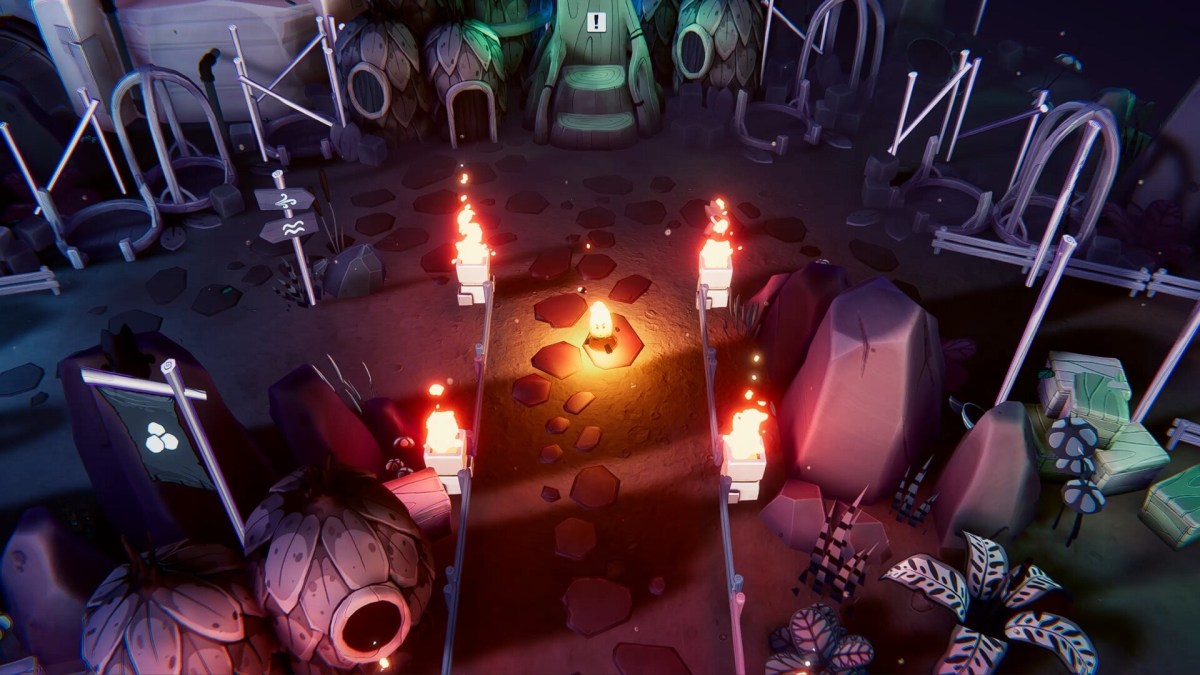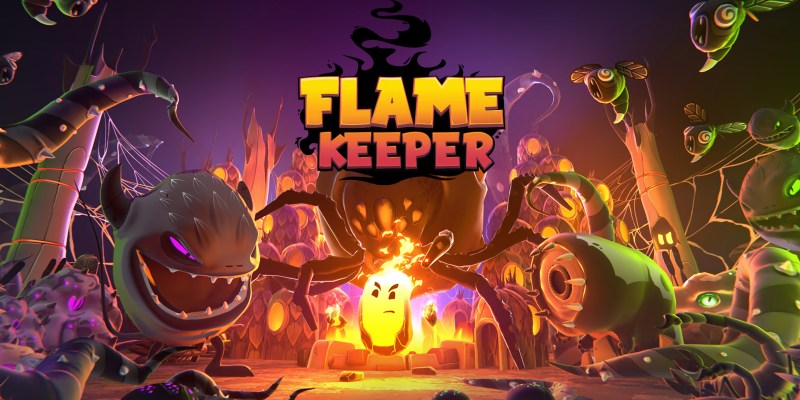Flame Keeper is an action roguelite with a twist: Many of the things you must obtain to advance require giving up some of your current HP. The Flame Keeper level available for preview for the Steam Next Fest demo is made up of three sections. The first two are small explorable areas filled with enemies and resources, and the third is a tower defense-style scenario where waves of enemies come from three portals to attack your bonfire. If the bonfire’s health hits zero before time is up, you lose and are sent back to town. All in all, the game has several great parts in preview, but its core concept doesn’t seem to be on full display quite yet.
The explorable areas are fairly small, winding paths surrounded by a pit. All areas are connected, but you can jump over certain parts of the pit as a shortcut between paths. You have to explore to find lanterns, carry them back to the central fire, and then fuel the main fire. But unlocking the lantern and fueling the main fire both cost HP, since you’re literally putting your fire into these objects. Enemies in the demo consist of spiders, worms, and some shadow creatures, and they will attack and try to stop you from taking the lanterns.
In the tower-defense section, you have a set amount of time you must defend the flame. You still move around freely and attack enemies coming for the flame. However, for the cost of some HP, you can set up deterrents like spike traps and slowdown goo, making it easier to defend the flame as the number of enemies attacking increases.

In each part of the level, you collect resources to spend in town that unlock permanent upgrades, such as increasing your damage and gaining additional attacks (since you only start with a light melee attack).
The random elements expected in a roguelite mostly come from two things scattered throughout each level. First are mushroom patches. If you use one, you’ll get a random status effect for a short amount of time, such as increased attack speed, health regeneration, or faster movement. However, there’s a chance you’ll get a debuff that reverses your directional input. The second is the chance you’ll find a special attack, such as creating a pit of lava, a circle that damages enemies around you, or a burst of fireballs that can hit enemies at range. You can only have one of these special attacks at a time, and they all have a cooldown.
The differences between the special attacks are obvious and do require a bit of play-style tweaking to utilize them. One example is the big hammer that hits super hard but requires time to set up, so you must predict where enemies will go or herd them into the space it will land. Since the mushroom effects are short and the special attacks have a cooldown, their inclusion didn’t make each attempt feel different. Every attempt feeling too similar is reinforced by the fact that using your sweeping light attack is often a fine or even the best strategy, even after unlocking more attacks.
The graphics are lovely with a distinct and cohesive style. Everything looks like it belongs together and was designed specifically for this game. It might seem like a small thing, but after seeing the same guns, electrical boxes, and vehicle assets across countless games, it’s refreshing to see something that looks crafted rather than purchased.
The idea of the risk/reward of using your health as a resource is great. However, enemies weren’t tough and they dropped abundant amounts of health. Pair that with all of the health you can find attacking objects in the level and using HP as a necessary resource becomes trivial.
While I love the concept of using HP as a resource, the Flame Keeper demo makes it feel like a nice idea rather than a fleshed-out feature integral to gameplay. It doesn’t need to go as hardcore with HP as a spendable resource as a game like King’s Field does to be something special. The concept is great, and if the developers nail down the give-take of that and punch up the base combat, they could have a roguelite I’ll be excited to try upon release.
